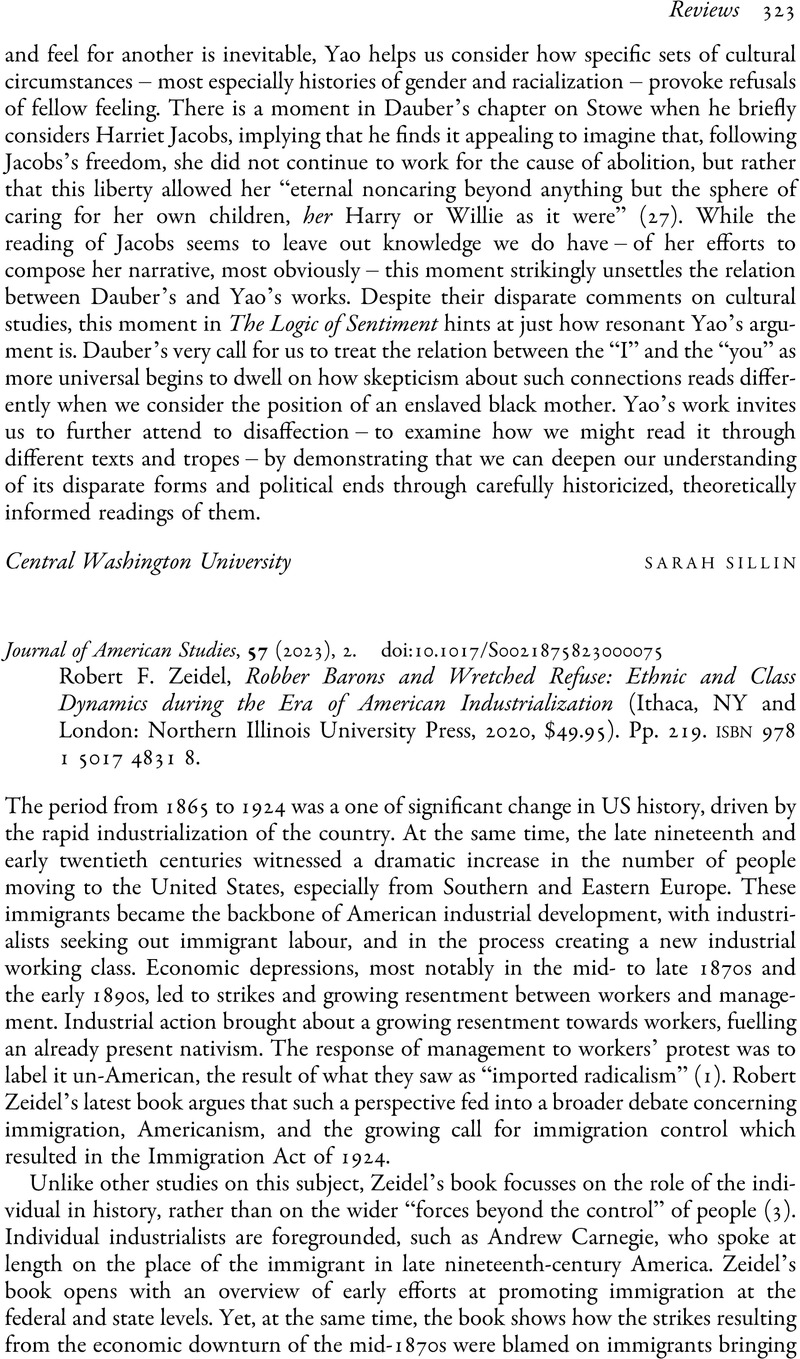No CrossRef data available.
Article contents
Robert F. Zeidel, Robber Barons and Wretched Refuse: Ethnic and Class Dynamics during the Era of American Industrialization (Ithaca, NY and London: Northern Illinois University Press, 2020, $49.95). Pp. 219. isbn 978 1 5017 4831 8.
Review products
Robert F. Zeidel, Robber Barons and Wretched Refuse: Ethnic and Class Dynamics during the Era of American Industrialization (Ithaca, NY and London: Northern Illinois University Press, 2020, $49.95). Pp. 219. isbn 978 1 5017 4831 8.
Published online by Cambridge University Press: 19 April 2023
Abstract
An abstract is not available for this content so a preview has been provided. Please use the Get access link above for information on how to access this content.

- Type
- Review
- Information
- Journal of American Studies , Volume 57 , Special Issue 2: Food, Health and Welfare in the Long Twentieth Century , May 2023 , pp. 323 - 324
- Copyright
- Copyright © The Author(s), 2023. Published by Cambridge University Press in association with the British Association for American Studies



